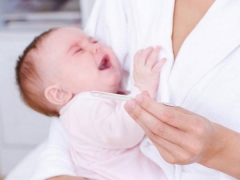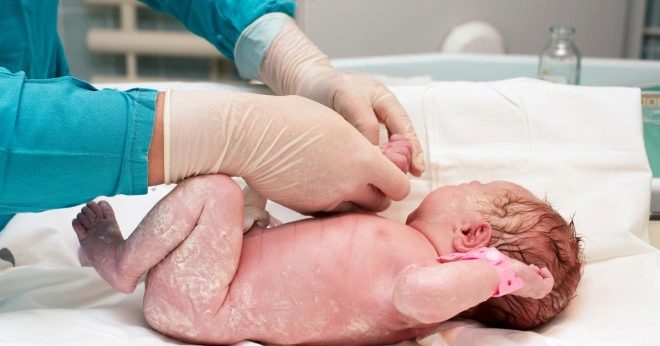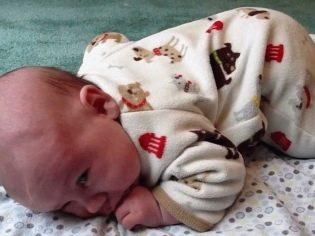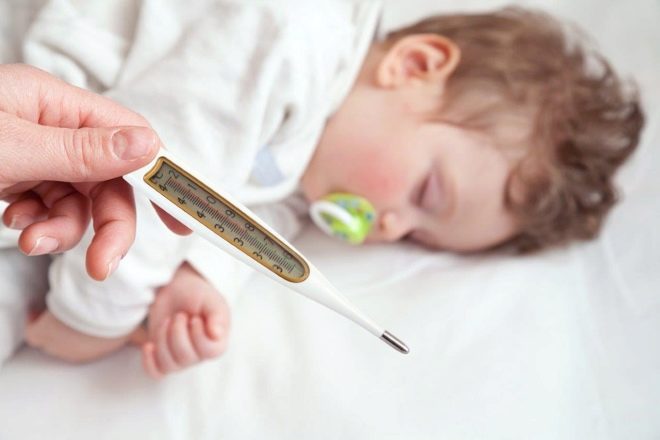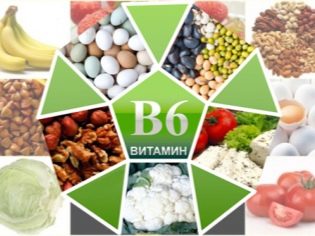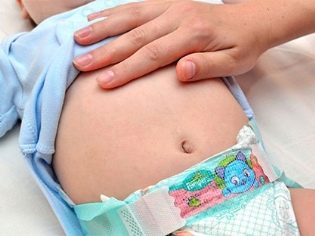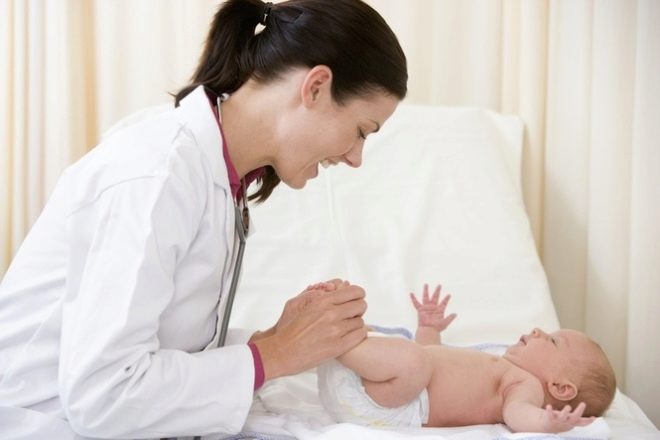Convulsions in infants and babies
Cramps in a child always look frightening. Especially for the youngest children. Muscle spasms in a newborn or toddler of the first year of life may manifest themselves in different ways, but in all cases, without exception, parents have one on one situation with a frightening situation in which it is not immediately clear what to do and where to turn.
In this article we will tell about what convulsions the karapuzs have in infancy and how moms and dads act.
How to develop?
Muscle spasms (cramps) are involuntary, spontaneous muscle contractions. During an attack, certain muscles may be affected, and large muscle groups may be involved.
Spasms can be long and painful - tonic. And can be combined with periods of relaxation - clonic.
All small children, from the moment of birth, peculiar increased convulsive readiness. This term in medicine explains the propensity of an organism with a combination of certain circumstances and factors to react with the onset of a convulsive syndrome.
In babies, the nervous system is immature, and the load on it from the very first hours of independent existence apart from the mother is very serious. This often explains the increased convulsive readiness in the very early childhood.
The convulsive symptom in the overwhelming number of infants occurs only once in a lifetime, and does not recur. But there are other cases where a child grows and occasionally experiences muscle spasms. Any case of seizures requires careful examination and follow-up.
Not every seizure is dangerous, not everyone is able in the future to somehow influence the mental and intellectual abilities of a child, and not every spasm at all contributes to the development of epilepsy.
Muscle spasms in more than 80% of newborns are caused by exposure to an adverse factor from the outside or are physiologically explainable and not dangerous. But there remain the other 20%, to which can be attributed convulsive manifestations due to diseases, pathologies of the brain, nervous system, and so on.
The mechanism of convulsions in a child always lies in the violation of the close connection between the brain, nervous system and muscles. The signal from the brain may be erroneous, may not reach the desired muscle group due to metabolic disorders, due to pathologies of the nervous system.
The “failure” in the signal carrying can be temporary, and the brain will be able to restore it quickly enough, and it can last long enough.
Convulsions or normal?
Parents of infants for the most part - people are rather suspicious. Therefore, sometimes movements are taken as convulsions that have nothing to do with spasms. Consider a few quite normal and healthy situations that are often perceived by parents as manifestations of convulsive syndrome:
- The kid suddenly starts and suddenly throws up arms or legs in a dream - this is the norm. The nervous system of the infant is imperfect, it is still in its infancy. Such impulses are a sign of “debugging” the work of a complex and important nervous system.
- A shaking chin, a shuddering lower lip and trembling hands while crying is the norm. The reason lies again in the work of the nervous system.
- Breath hold.Mom can pay attention that the baby sometimes “forgets” to breathe in a dream or for a long time holds the breath while crying - this is also a norm that cannot be considered a cramp.
Convulsions always develop suddenly, most of them - while awake. Cramp looks unnatural. For example, in case of weak focal convulsions, the baby can only freeze, looking at one point, and this is already considered muscle spasm.
With some varieties of convulsive syndrome, loss of consciousness occurs, with some, the child does not lose consciousness.
In an attack, the baby can take unnatural and bizarre poses, can involuntarily write or empty the intestines, for a while to stop breathing.
To distinguish convulsions from the usual actions of shuddering, it is enough to observe the baby carefully - if there is a cyclical nature and a certain sequence, then we are talking about muscle spasm.
Possible causes and symptoms of seizures
Most convulsions occur in newborns and infants, who were born earlier than planned, because the nervous system of premature babies is weaker and more vulnerable than of their peers who appeared on time.
Spastic muscle contractions in the first days and months of life always have prerequisites, only the medics fail to establish them in a quarter of cases, especially if the spasms happened once and did not recur.
The most common diseases and conditions that can lead to convulsive syndrome are listed below.
Neonatal
These are muscle spasms that can accompany the first 4 weeks of the baby's birth. This is a rather dangerous symptom that always has adverse effects.
Mortality in neonatal convulsions is about 40%. Of the surviving babies, many subsequently become disabled. The cause may be a birth trauma, intrauterine infection, abnormalities in the structure or tumor of the brain, severe cerebral lesions of a congenital or acquired character during labor.
There are convulsions attacks, in which the baby suddenly freezes, throws his head back, pulls out the handles, "rolls his eyes." Breathing may stop for a while.
Febrile
These cramps begin on the background of 12-24 hours of elevated temperature (38.0 - 39.0 degrees and above). Heat can be a symptom of any disease, and it is almost impossible to predict the development of seizures.
If the baby has had febrile seizures at least once, then the probability that they will recur with the next illness with fever is quite high - more than 30%.
There is no particular danger of cramps., only the wrong actions of adults can do harm during an attack - attempts to keep the baby in a level position can result in fractures, and attempts to put a spoon in the mouth can cause a jaw injury.
It is not difficult to recognize such cramps in a baby - the baby loses consciousness, cramps in his legs, and then his arms and body, and the child sags with his chin upturned. Then the symptoms go in the reverse order.
Disruption of metabolic processes
Useful for the human body minerals and vitamins, as well as hormones, provide easy conduction of signals from the brain to the muscles through nerve cells.
An overabundance or deficiency of certain substances causes disturbances in this interaction. So, convulsions can occur with a deficiency of calcium, magnesium, lack of glucose, with an excess of sodium, with a shortage of vitamin B6.
At the same time, the symptoms can be very diverse - the baby’s body can suddenly strain, or, on the contrary, relax to an unnatural state. If the child is “limp” and jerks a leg or handle, this may well be a sign lack of calcium or glucose.
Affective respiratory
Such paroxysms are always associated with the occurrence of apnea.The baby’s breathing may be due to strong emotions when frightened, for example, when the baby is immersed in bathing water.
Seizures can no longer manifest themselves, usually the state does not reach the loss of consciousness. This type is considered the most favorable from the point of view of forecasts - such apnea pass by itself after 7-8 months, and for many - earlier.
Recognizing such attacks in an infant is not difficult - the baby at the peak of inhalation simply stops making sounds, freezes with its mouth open, sometimes the skin of the face turns blue. About such a manifestation often say "went" or "rolled." If common seizures occur, they are very similar to epileptic.
CNS Pathologies
Damage to the central nervous system can result from congenital abnormalities or birth injuries. Convulsive contractions of the muscles of the arms and legs are characteristic of children with hydrocephalus, head injuries, microcephaly, cerebral palsy.
When organic damage to the central nervous system, for example, when exposure to baby toxins, toxic substances, there is also a strong spastic attack.
Usually, convulsions are painful, frequent, and the child necessarily requires medical consultation and treatment with anticonvulsants.
Spasmophilia
Tetany (spasmophilia) is manifested by the tendency of children with signs of rickets to convulsions on the background of metabolic disorders. Another official name of the pathological condition is ricitogenic tetany.
It usually manifests as laryngospasm., but sometimes it may look like convulsive contractions of the muscles of the arms, legs, face, body.
The extreme danger of tetany is somewhat exaggerated, because the tendency to seizures goes along with the signs of rickets as the child grows. The effect of such muscle spasms on the mental and mental development of the baby has not been convincingly proven.
What to do?
If any convulsions occur in children under one year old, parents should first of all call “Ambulance”. While the team is on call, mom and dad must refrain from using any medication.
The child needs to be placed comfortably, laying him on his side so he won't choke own saliva or vomit, if suddenly begin an attack of vomiting.
It is impossible to hold the baby, by straightening the limbs or back, which are cramped together by force, in order not to injure him or cause fractures and tearing of the muscles from the bones. Also, do not put anything in the baby's mouth - he does not have a tooth yet to bite his tongue, and it is impossible in principle to swallow it at any age.
All the rest of the time before the doctor arrives, mom and dad should carefully observe the order in which the symptoms appear, the nature of the convulsions, and how long the baby is in the attack. All these data need a doctor to quickly make the right decision.
Open the window or window so that more fresh air enters the room.
Treatment
Doctors usually relieve convulsions upon arrival, introducing the child "Seduxen" under the tongue or into the muscle. After this, the baby must be hospitalized, because the attack may recur even before the doctors find its cause, and the second time the Ambulance may not be in time, since repeated attacks usually proceed faster and stronger than the first.
The baby needs careful observation. If necessary, he is assigned anticonvulsant drugs - muscle relaxants, sedatives, with epilepsy - antiepileptic drugs.
It is worth preparing for the fact that the treatment in several days in the hospital will not end. From now on, the child will be dispensary observed by a neurologist, he will be prescribed the necessary means to suppress the convulsive syndrome, anti-histamine preparations, vitamins.
A neurologist will have to visit often enough not to miss the possible delayed effects of convulsive syndrome.
Babies who have suffered convulsions are strongly recommended to take long walks and sleep in the open air, nutrition rich in vitamins, enhanced measures to strengthen the immune system.
Pediatrician's advice on what to do with cramps, see below.
